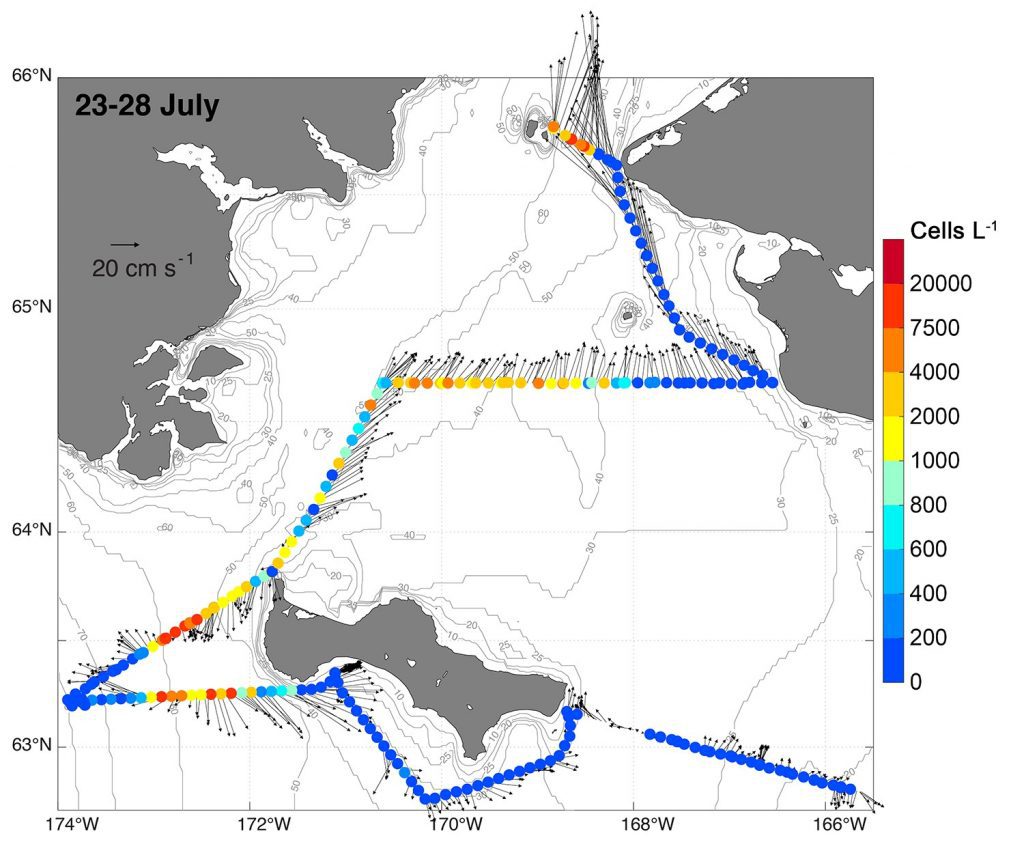Fachon, E., Pickart, R., Sheffield, G., Pate, E., Pathare, M., Brosnahan, M., Muhlbach, E., Horn, K., Spada, N., Rajagopalan, A., Lin, P., McRaven, L., Lago, L., Huang, J., Bahr, F., Stockwell, D., Hubbard, K., Farrugia, T., Lefebvre, K., & Anderson, D. (2024). Tracking a large‐scale and highly toxic Arctic algal bloom: Rapid detection and risk communication. Limnology and Oceanography Letters. https://doi.org/10.1002/lol2.10421

Surface currents associated with initial bloom detection (23–28 July 2022) of a toxic bloom of the dinoflagellate Alexandrium catenella in the northern Bering Sea. Alexandrium catenella cell abundance is indicated by colored points and black arrows indicate surface (top 25 m) current velocities measured by the shipboard acoustic Doppler current profiler (ADCP). This study tracked the bloom over six weeks as it advected northward into Arctic waters. Figure provided by Evie Fachon.
Climate warming is expanding the potential for harmful algal blooms (HABs) to occur in polar waters, raising significant concerns about emerging human and ecosystem health impacts. Recent observations of HAB species and algal toxins in Arctic waters have established a clear need for a better understanding of bloom dynamics coupled with detection and mitigation strategies. During summer 2022, a massive bloom of the toxic dinoflagellate Alexandrium catenella was detected as it moved through the Bering Strait region. This bloom was exceptional in scale, density, and toxicity, far exceeding any events reported previously in Arctic waters. This unprecedented risk to the remote coastal communities of the region was communicated in near real time, providing the opportunity for rapid mobilization and establishing a framework for future event response. This research represents a highly interdisciplinary collaboration between biological and physical oceanography, as well as coastal stakeholders.
